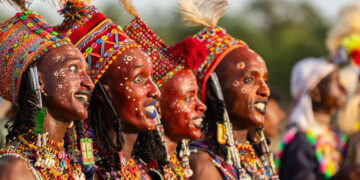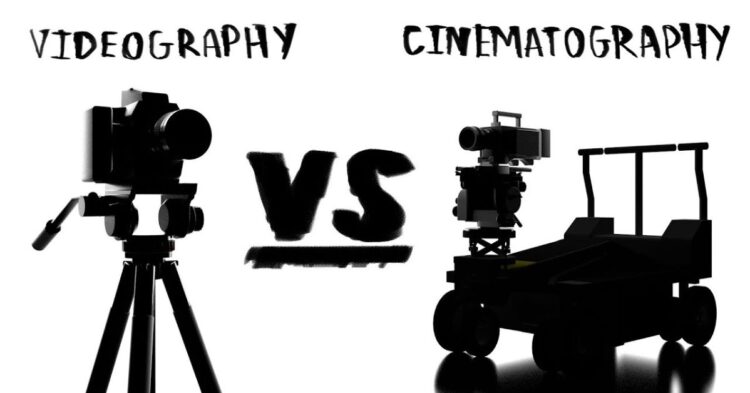The terms “cinematographer” and “videographer” are often used interchangeably. However, they represent distinct professions with unique roles, responsibilities, and skill sets.
This blog post delves into the differences between cinematographers and videographers, shedding light on their respective domains, tools, and creative processes.
What is Cinematography?
Cinematography is the art and science of motion-picture photography. It involves capturing visual images for cinema, television, and other visual media, emphasizing storytelling through the use of lighting, camera angles, composition, and movement.
A cinematographer, also known as the director of photography (DP), collaborates closely with the director to bring a narrative to life, ensuring that each frame aligns with the story’s emotional and aesthetic vision.
This role demands a deep understanding of visual storytelling, technical expertise with camera equipment, and the ability to manage a team of camera and lighting technicians.
What is Videography?
Videography refers to the process of capturing moving images on electronic media, such as videotape, direct to disk recording, or solid-state storage. A videographer typically records events in real-time, such as weddings, corporate events, documentaries, or live performances.
Unlike cinematography, which often involves large crews and elaborate setups, videography is frequently a solo endeavor or involves a small team.
The focus is on documenting events as they unfold, with less emphasis on pre-planned artistic direction and more on capturing the reality of the moment.
What is the Difference Between a Cinematographer and a Videographer?
1. Scope of work
Cinematographers are integral to film and television productions, commercials, and music videos. Their work involves pre-production planning, including storyboarding and shot composition, as well as post-production collaboration to ensure the visual consistency of the project.
Videographers primarily document live events, corporate meetings, weddings, and other real-time occurrences. Their work is often delivered as-is, with minimal post-production editing, focusing on capturing the event authentically.
2. Creative control and collaboration
Cinematographers exercise significant creative control, working closely with directors, production designers, and lighting technicians to craft a specific visual style that enhances the narrative. This collaborative process involves deliberate choices in lighting, camera movement, and shot composition.
Videographers have limited control over the environment and must adapt to the unfolding events. Their creativity lies in framing shots on the fly and ensuring comprehensive coverage of the event without the opportunity for multiple takes.
3. Equipment and technology
Cinematographers utilize high-end cameras, lenses, lighting rigs, and often complex setups like dollies and cranes. The equipment is chosen to achieve a particular aesthetic and may vary from project to project based on the desired visual outcome.
Videographers use more portable and versatile equipment, such as handheld cameras, tripods, and on-camera lighting. The emphasis is on mobility and the ability to quickly adjust to changing conditions during live events.
4. Team structure
Cinematographers lead a team that may include camera operators, focus pullers, gaffers, and grips. This hierarchical structure allows for intricate setups and precise control over the visual elements of a production.
Videographers often work alone or with a minimal crew, handling multiple aspects of the production themselves, including audio recording and sometimes even editing.
5. End product
Cinematographers contribute to productions that are typically intended for theatrical release, television broadcast, or streaming platforms, where high production values are paramount.
Videographers produce content for personal use, corporate communications, online platforms, or archival purposes, where the immediacy of capturing the event is more critical than cinematic quality.
Becoming a Cinematographer
Aspiring cinematographers often pursue formal education in film production or cinematography, gaining theoretical knowledge and practical experience. Building a portfolio through student films, independent projects, and internships is crucial. Progression in this field typically involves starting in entry-level positions, such as camera assistants, and gradually advancing to the role of director of photography.
Becoming a Videographer
Videographers may enter the field through various educational backgrounds, including communications, journalism, or media studies. Practical experience is highly valued, and many videographers build their skills through hands-on work, freelancing, or working with production companies. A strong portfolio showcasing versatility and the ability to capture live events is essential for career advancement.
Industry Perceptions and Misconceptions
The overlap between cinematography and videography can lead to misconceptions. It’s important to recognize that while both professions involve capturing moving images, the context, purpose, and methodology differ significantly.
Cinematography is often associated with artistic filmmaking, requiring a deep understanding of visual storytelling and collaboration within a large production team. Videography is linked to real-time event documentation, demanding adaptability and the ability to work independently or with a small crew.
Conclusion
Understanding the distinction between cinematographers and videographers is essential for appreciating the unique contributions each makes to the visual media space. While both professions share a foundation in capturing moving images, their roles, responsibilities, and creative processes are tailored to different aspects of visual storytelling and documentation. Recognizing these differences allows for a greater appreciation of the skills and artistry involved in each discipline.





































Discussion about this post